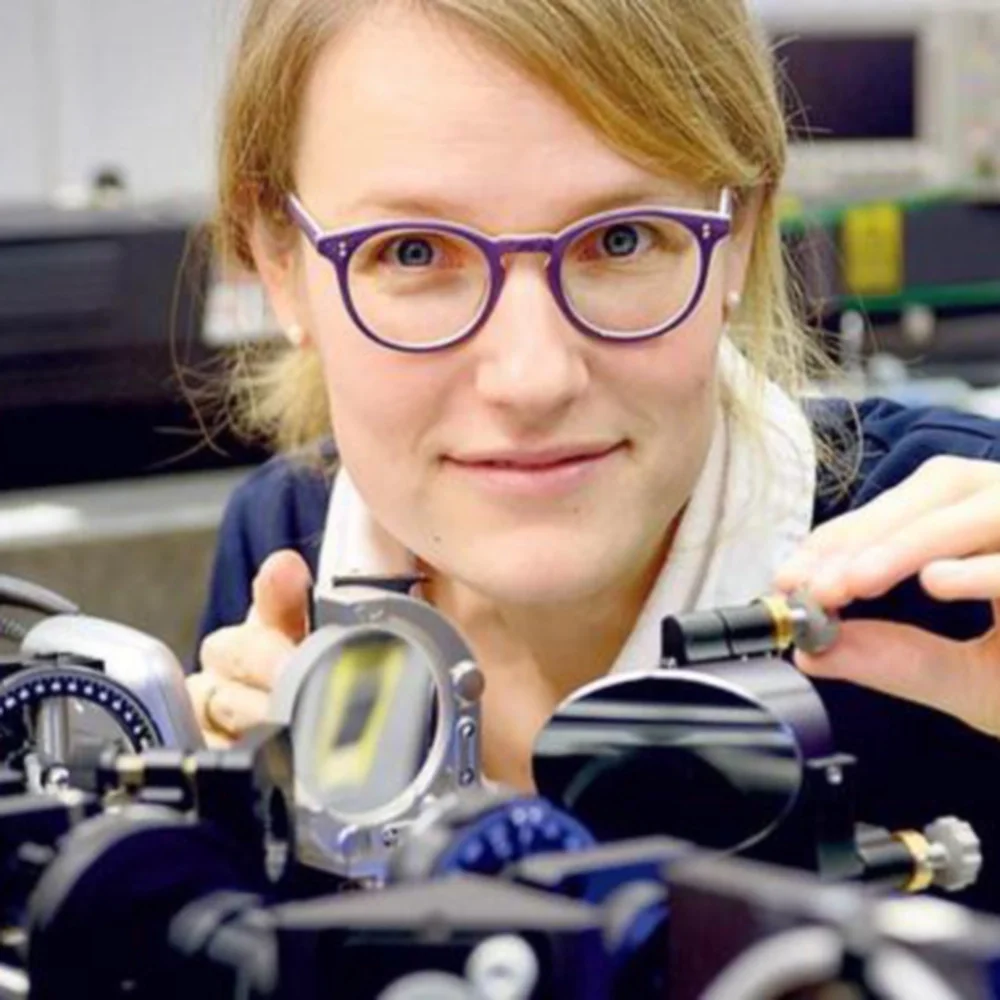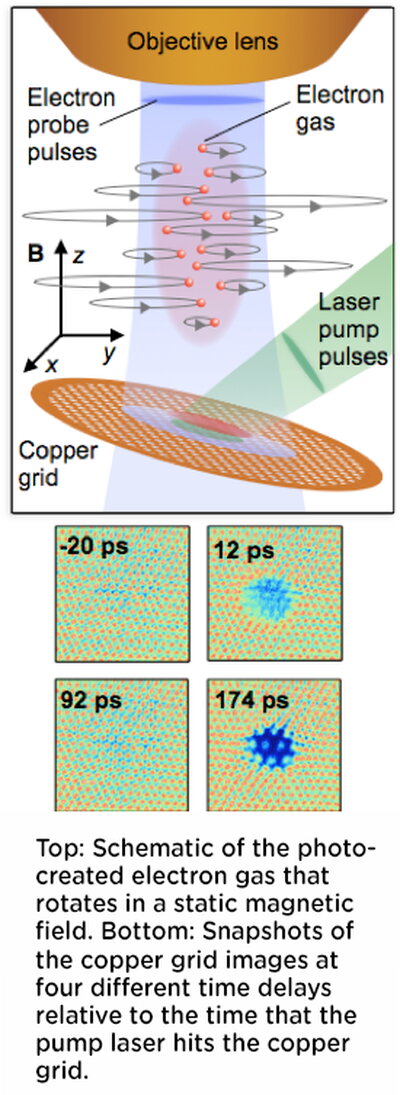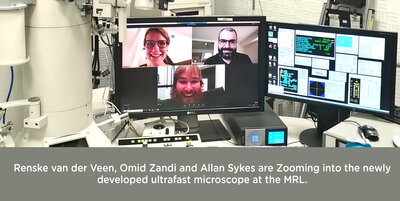
Stephanie Adams, Materials Research Laboratory
Capturing the ultrafast dynamics of electrons has been a long-standing dream of scientists. That dream became reality when researchers in the lab of Renske M. van der Veen, professor of chemistry and Materials Research Laboratory scientist, developed an instrument that can directly visualize electron movement.
“This unique tool is based on a Transmission Electron Microscope (TEM) that has been modified by adding ultrafast laser systems,” said van der Veen. This advancement allows scientists to obtain a temporal resolution of a few hundred femtoseconds.
The new Ultrafast Electron Microscope (UEM) can be used to observe light-triggered processes inside materials, such as electron transfer reactions, a hallmark of solar energy conversion or photocatalysis. However, in this work, Omid Zandi and Allan Sykes, both researchers in the group of Prof. van der Veen, have created a dense electron gas in vacuum by striking a copper surface with an intense pulse of laser light. Since electrons repel each other, the gas impulsively explodes, which occurs on the time scale of one trillionth of a second (picoseconds, ps, 10-12 s). The result is a rapid transformation of the gas from “a pancake shape, just after light excitation, to a cigar-shaped electron cloud at later times.”

“The intriguing part of the research is the fact that the electron gas is subject to a magnetic field imparted by the objective lens of the electron microscope,” said van der Veen, the corresponding author on the paper. “The trajectories of charged particles, such as electrons, are bent when they feel a magnetic force – the same effect that happens with the northern lights.”
“In the new tool, the electrons, contained in the gas, rotate around the magnetic field direction with a fixed electron cyclotron frequency. This frequency is a signature for the strength of the magnetic field and the electron gas density, and it is independent of the initial velocities of the electrons contained in the cloud,” explains van der Veen. The newly developed ultrafast microscope was able to capture the resulting periodic “breathing” motions of the electron gas by recording the “lensing distortions,” in an image of a regular copper grid underneath the cloud, on a picosecond time scale.
In collaboration with researchers at the Michigan State University and Integrated Dynamic Electron Solutions (IDES) Inc, the electron dynamics could be described theoretically and in simulations. The study of ultrafast dynamics of electron gases in vacuum is important for the development of high-brightness electron and X-ray sources, such as free-electron lasers.
A logical next step would be to attempt extending these experiments to condensed phases, for example two-dimensional (2D) electron gases at the interface between two different materials. Such experiments could yield intriguing insights into the coupling of photoexcited electrons and electron holes, and other electronic properties of 2D gases.
The paper, “Transient Lensing from a Photoemitted Electron Gas Imaged by Ultrafast Electron Microscopy,” is published in Nature Communications.

Sayantani Sarkar contributed to this story.